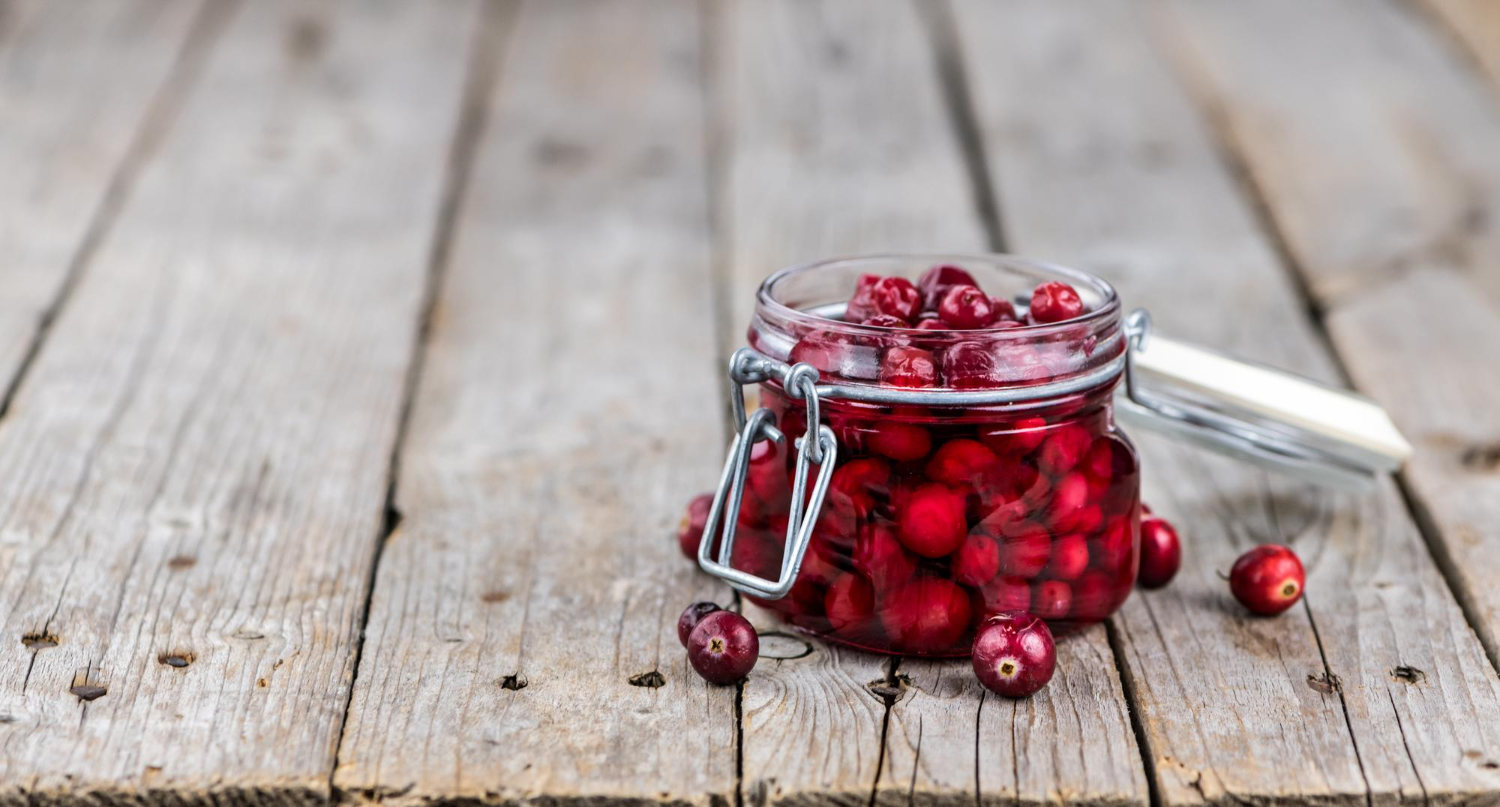Cranberry sauce, with its vibrant hue and tangy-sweet flavor, has long been a staple at festive tables, especially during the holiday season. Its popularity soars as it graces Thanksgiving dinners and Christmas feasts, bringing a touch of tradition and taste to family gatherings. But why limit the enjoyment of this delightful condiment to just a few months? This is where “Canning Cranberry Sauce” comes into play, transforming it from a seasonal treat to a year-round delight.
Canning cranberry sauce allows you to preserve the freshness and vibrant flavors of cranberries well beyond their natural season. It’s not just about extending the shelf life; it’s about capturing the essence of autumn’s harvest in a jar that can be enjoyed any time of the year. Through canning, you create “homemade cranberry preserves” that retain the taste and nutritional value of fresh cranberries, making them a versatile addition to various meals.
Embracing the art of canning means you can have “year-round cranberry delights” at your fingertips, whether for spreading on toast, adding to baked goods, or enhancing sauces. It’s a journey into “canning basics,” where you learn not only a valuable culinary skill but also a way to keep your pantry stocked with homemade goodness. So, let’s dive into the world of canning cranberry sauce and discover how this simple process can bring a burst of flavor to your kitchen all year round.
Preserving Basics: The Art of Canning
Canning is an age-old method of “food preservation” that’s as relevant today as it was for our ancestors. It’s a way to extend the shelf life of fresh produce, including cranberries, by storing them in airtight containers. This process involves several “canning essentials” that ensure the food remains safe and flavorful for months.
Key supplies for canning include glass jars, metal lids with sealing compounds, and a water bath canner. The jars are used to store the food, while the lids are designed to create an airtight seal during the canning process. A water bath canner, which is essentially a large pot with a rack, is used for the heat processing of jars filled with high-acid foods like cranberries.
Safety is paramount in canning. It involves “safe canning practices” like sterilizing the jars and lids to eliminate harmful bacteria and ensuring a proper seal to prevent spoilage. The filled jars are submerged in boiling water in the canner for a specific amount of time, which varies based on the recipe and jar size. This process not only seals the jars but also destroys any remaining microorganisms, ensuring the food’s safety and longevity.
By mastering these “food preservation methods,” you can confidently preserve a variety of foods, including cranberry sauce, ensuring they remain safe and delicious for future enjoyment.
Crafting Cranberry Sauce for Canning
Creating cranberry sauce for canning starts with selecting high-quality ingredients. Fresh cranberries are ideal for their tartness and pectin content, which aids in the thickening of the sauce. Sugar is added not just for sweetness but also for its preservative qualities. To enhance the flavor, consider adding optional ingredients like orange zest, cinnamon, or nutmeg.
Here’s a simple “cranberry sauce recipe” perfect for canning:
- Ingredients: Start with 4 cups of fresh or frozen cranberries, 2 cups of sugar, and 1 cup of water. Optional: zest of one orange, a cinnamon stick, or a pinch of nutmeg.
- Cooking the Sauce: Combine the cranberries, sugar, and water in a large pot. Bring the mixture to a boil over medium heat. Reduce the heat and let it simmer until the cranberries burst and the sauce thickens, about 10-15 minutes. If using, add the orange zest and spices during the last few minutes of cooking.
- Testing for Canning Suitability: The sauce should be thick enough to coat the back of a spoon but still pourable. Remember, it will thicken further as it cools. A good “flavorful cranberry mix” is both sweet and tart, with a hint of spice.
- Cooling: Remove the sauce from heat and let it cool slightly. If you’ve used a cinnamon stick, remove it before canning.
This recipe ensures your “cranberry sauce” is not just delicious but also suitable for “preparing for canning.” The balance of sugar and cranberries, along with the cooking process, creates a preserve that’s both tasty and safe to store.
Jar Prep and Preservation: Sealing Cranberry Sauce
Once your cranberry sauce is ready, the next step is “filling and sealing the jars” to preserve the sauce’s fresh, tangy flavor. Begin by sterilizing your canning jars and lids; this can be done by boiling them in water for about 10 minutes. After sterilizing, carefully ladle the warm cranberry sauce into the jars. It’s important to leave about a quarter-inch of headspace at the top of each jar to allow for expansion during the “water bath canning” process.
After filling the jars, take a clean spatula or a small tool to gently remove any air bubbles by running it along the inside edge of the jar. This step is crucial for preventing air pockets, which can affect the preservation process. Next, wipe the rims of the jars with a clean, damp cloth to ensure a good seal.
Place the lids on the jars and screw the bands on until they are fingertip tight. Then, using a water bath canner, process the jars by submerging them in boiling water for the time specified in your recipe. This process not only seals the jars but also kills any remaining bacteria, ensuring your “homemade cranberry preserves” are safe for storage.
Preserving and Relishing Your Homemade Delight
After successfully canning your cranberry sauce, proper storage is key to maintaining its quality and safety. Store the sealed jars in a cool, dark place away from direct sunlight. Typically, “homemade cranberry preserves” can last up to a year if stored properly. However, always check for signs of spoilage, like a broken seal, mold, or off-odors, before consumption.
There are numerous creative ways to enjoy your “canned cranberry sauce” beyond the traditional turkey accompaniment. Use it as a glaze for meats, a topping for cheesecakes, or even a spread for sandwiches. Its versatility makes it a valuable addition to many recipes, allowing you to enjoy the “flavors of the season” all year round.
In terms of shelf life, homemade cranberry sauce typically maintains its best quality for about a year in proper storage conditions. If you’re unsure whether the sauce is still good, look for any signs of spoilage, such as an unusual smell, discoloration, or mold. When in doubt, it’s safer to discard the sauce.
Wrapping Up: Celebrating Homemade Preserves
Canning cranberry sauce is not just about preserving a seasonal favorite; it’s a celebration of “culinary creativity” and self-sufficiency in the kitchen. The process of canning, from preparing the sauce to sealing the jars, is a fulfilling “canning adventure” that brings a unique joy and satisfaction.
We encourage you to embrace the art of canning and to experiment with different flavors and ingredients. The beauty of canning is in its versatility and the endless possibilities it offers for creative expression in the kitchen.
Share your “canning adventures” and experiences in the comments section below. Whether you’re a seasoned canner or trying it out for the first time, your stories and tips can inspire and help build a community of home canners. Let’s keep the tradition of homemade preserves alive and thriving!
Canning Q&A: Navigating Homemade Cranberry Sauce
Q: Can I reduce the amount of sugar in my cranberry sauce?
A: While you can adjust the sweetness to taste, it’s important to remember that sugar acts as a preservative. Reducing it too much may affect the sauce’s shelf life.
Q: Does altitude affect the canning process?
A: Yes, altitude can affect boiling temperatures and processing times. It’s crucial to adjust your canning process according to your altitude for safe preservation.
Q: What if my cranberry sauce hasn’t thickened properly?
A: If your sauce is too runny after canning, you can open the jars and cook the sauce down more before re-canning it, or simply use it as a syrup or glaze.
Q: How can I use canned cranberry sauce in recipes?
A: Canned cranberry sauce is incredibly versatile. It can be used in baking, as a topping for desserts, or even incorporated into savory dishes like stews and marinades.
Have more “canning FAQs” or specific “cranberry sauce questions”? Feel free to ask in the comments below. Happy canning!












